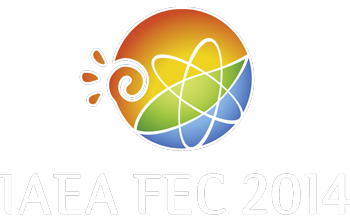Speaker
Prof.
Mikhail Shmatov
(Ioffe Physical Technical Institute)
Description
The use of the D-D fusion reactions for power production is discussed for many years. The main advantage of the power plants employing these reactions consists in a lower amount of tritium involved in the process. Ignition of the D-D fusion reactions is a more difficult task compared to the ignition of the D-T fusion reaction. For power plants with the magnetic plasma confinement, the use of the D-D and D-He^3 fusion reactions in the observable future will probably be impossible or at least inexpedient [1]. Ignition of deuterium explosions by the fission explosions is the most technically simple approach to using the D-D fusion reactions for power production [2], but this approach seems to be politically unacceptable.
The problem of using microexplosions with physically important reactions of D-D fusion for power production was discussed rather widely. The compression of a fuel with small or zero average atomic fraction of tritium using laser or other driver with very high parameters, and, hence, very high cost is only one of the possible approaches. The most effective approaches are those in which the compression of such fuel is caused entirely or mostly by thermal radiation of one or several D-T microexplosions [3,4]. For realization of these approaches, the driver with the parameters corresponding to ignition of D-T microexplosions with the yields of about 1 GJ or less will be sufficient [4].
The use the p-B^11 reaction for power production in the scenarios with heating the fuel by the picosecond duration, petawatt power laser pulses without its compression was proposed [5]. However, the use of this method for power production is impossible, because the transversal expansion of the plasma would result in the very low fuel burning efficiencies corresponding to the acceptable laser pulse energies and fusion yields.
[1] Stott P.E., Plasma Phys. Control. Fusion 47, 1305 (2005).
[2] Ivanov G.A. et al., Vzryvnaya Deiterievaya Energetika, Snezhinsk, RFYaTs – VNIITF (2004).
[3] Winterberg F., J. of Fusion Energy 2, 377 (1982).
[4] Shmatov M.L., Pis’ma v ZhTF 36, No. 8, 82 (2010) [Tech. Phys. Lett. 36, 386 (2010)].
[5] Hora H. et al., Energy Environ. Sci. 3, 479 (2010).
| Country or International Organisation | Russian Federation |
|---|---|
| Paper Number | IFE/P6-16 |
Author
Prof.
Mikhail Shmatov
(Ioffe Physical Technical Institute)

